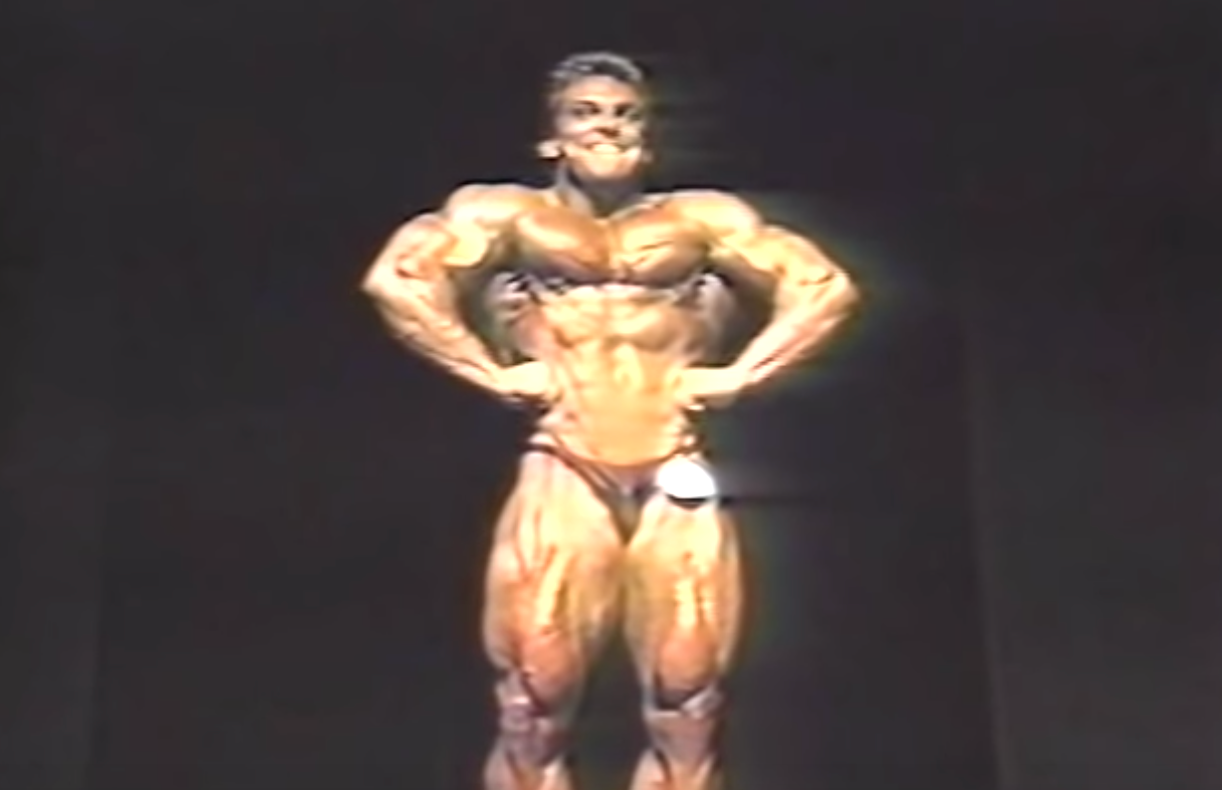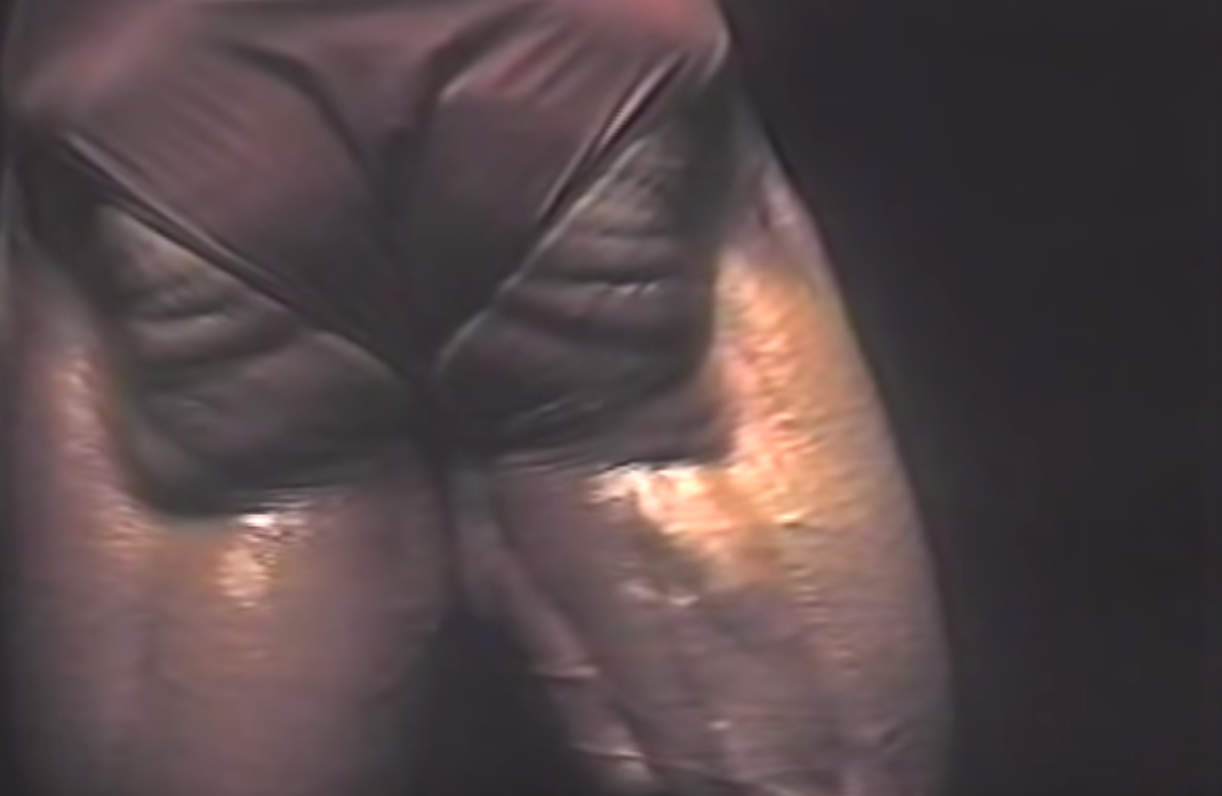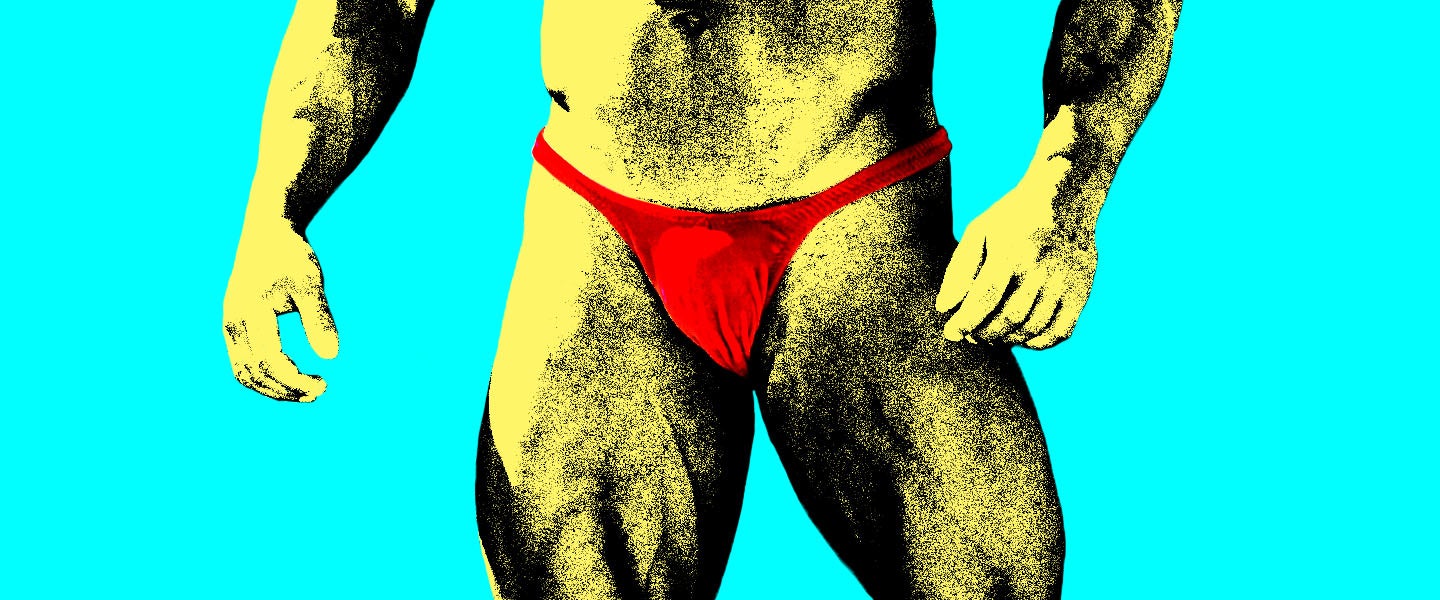In 1986, Rich Gaspari waltzed on stage of the International Federation of Bodybuilding & Fitness Pro Championships and changed the sport forever. He wasn’t wearing more traditional bodybuilding trunks — instead, he posed in a thin, red thong, a few inches shorter than his competitors’, that exposed his ripped glutes.

The judges lauded his physique for being lean enough to expose the striation in the muscles in his buttocks, and a new standard was set for competitive bodybuilders everywhere: To get a leg up on the competition, they wore a thong and flexed ass.

But how did we get here, and what did bodybuilders even wear before the thong? We talked to Conor Heffernan, a historian of physical culture, who’s extensively documented the rise of bodybuilding — and Gaspari himself.
Fig Leafs and the Birth of Trunks
To begin, Heffernan says the early days of bodybuilding were relatively modest by today’s standards. Prior to the 19th century, when trunks became popular, “men in the 1860s/1870s posed for the camera in long breaches, leotards or togas” to emulate Ancient Greek and Roman statues. “So men like Eugen Sandow posed akin to Greek statues,” which meant the bodybuilding outfit of choice were fig leaves like the mythical figures of old. “Heck, even the leotard was reminiscent of Hercules.”

“With the rise of ‘physical culture’ — a movement in the 1890s of societal interest in good nutrition and keep-fit exercise — we see men wearing swimming trunks or small posing trunks in photographs,” Heffernan says, adding that “key figures such as Eugen Sandow, Bernarr MacFadden and later Charles Atlas routinely promoted images of themselves in posing trunks from the early 1900s to 1930s.”
As the rise of physical culture took hold, Heffernan says that bodybuilding became normalized by the 1920s. “With the emergence of bona fide bodybuilding shows in Europe and the U.S. in the 1920s,” trunks “became a uniform of sorts for bodybuilding,” he says. “So prevalent was this practice that well into the 1960s, Western men would workout in the gym solely in posing trunks.”
The Thong Emerges
According to Heffernan, the final leap into bodybuilding thongs came during a perfect storm of calorie counting, steroids and bodybuilding sponsorship that began to infiltrate the bodybuilding scene in the late 1960s. “Men like Joe Weider would pay athletes a wage, however paltry, to appear in his magazines, [which] meant bodybuilders had more time to focus in the gym, and also chemical means to increase their physical bulk. Competitors could reach lower levels of body fat than ever before.”
Thus, he adds, competitors wanted to show just how lean and cut they were. “Arnold Schwarzenegger initially placed second in a lot of his bodybuilding shows because he lacked the definition of some of his counterparts. Famously, Arnold addressed this issue and brought an award-winning physique to the stage. In the late 1970s, after Arnold retired, Frank Zane won three Mr. Olympia titles with a level of leanness few could match. The following years would see bodybuilders come in larger and leaner than ever before.”
Then came the 1986 IFBB Pro World Championship. For years prior, “Lee Haney dominated the bodybuilding scene,” Heffernan says. “He possessed a symmetry and size that few could match and is undoubtedly one of the greatest athletes the sport has seen.” In 1986, “Rich [Gaspari] was unlikely to beat Haney on size. So what did he do? He came in leaner than anyone had ever done — hence the striated glutes, which no one had done at such a large stage. Like Roger Bannister’s four-minute mile, Gaspari showed people a previously unheard-of feat.”
As for Gaspari, this was a simple decision: He worked hard to become extra-lean, and to get an edge on the competition, he needed to show it. “I was the first to get into ultra-ripped condition and set a standard in conditioning,” he tells MEL today. “Being the first bodybuilder to display striated glutes, I changed my suit to be able to display these muscles.”
Since then, Heffernan concludes, “the thong has become smaller and smaller as striated glutes are now a marker for appropriate leanness. In effect, smaller posing trunks marked an evolution in the sport itself.”

